The last few months have felt like a tough slog on many fronts, including my creative pursuits. I have pushed myself to keeping working, partially out of a deeply ingrained obsession with productivity (something I am actively reflecting upon right now) and partially because not engaging in creative expression is detrimental to my mental health. After reading Jenny Odell’s How To Do Nothing, I am thinking about how I can uncouple these two things, and focus on creativity independent of and outside the attention economy. It’s a book I highly recommend, by the way, for creatives and non-creatives alike; it’s not a self-help or how-to book, despite its title, but rather a philosophical examination of how to live meaningfully in a capitalist society.
I have always struggled with the idea of putting a price on the things I make (or other skills, like personal thrift shopping), yet felt that I had to in order to legitimize them. That creates a situation where, yes, I can get external validation via a concrete method, but also where the whole process has no meaning or value apart from that validation even though that’s not why I started it in the first place. This is a model that, by necessity, has to apply to my professional work, but I don’t see why it should apply to my creative work (except that, in this day and age, we are told everything can and should be commoditized). I don’t know what the answer is. I have been too immersed in capitalist culture for too long for the answers to be readily apparent, but I am questioning and reflecting and trying to find my own path forward. This involves questioning a lot of deeply held beliefs and assumptions, and it isn’t an easy or fun thing. It’s also not something that I can easily package for consumption on this blog, so again, I will point you in the direction of How To Do Nothing if this is a topic that sparks your interest.
But enough about my philosophical wanderings. Let’s talk about some of the things I’ve been making lately. One of them was a series of pieces inspired by Greek mythology, starting with these Demeter (goddess of the harvest) earrings:
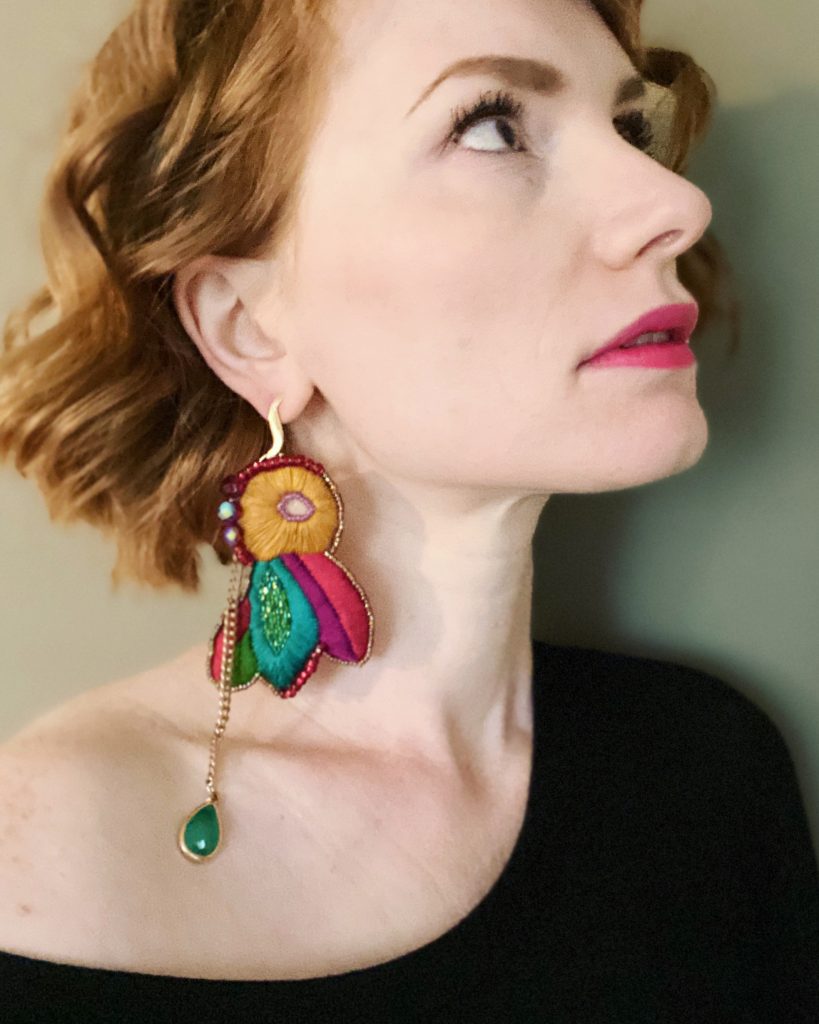
Then, there was the Thetis (goddess of the sea) necklace:
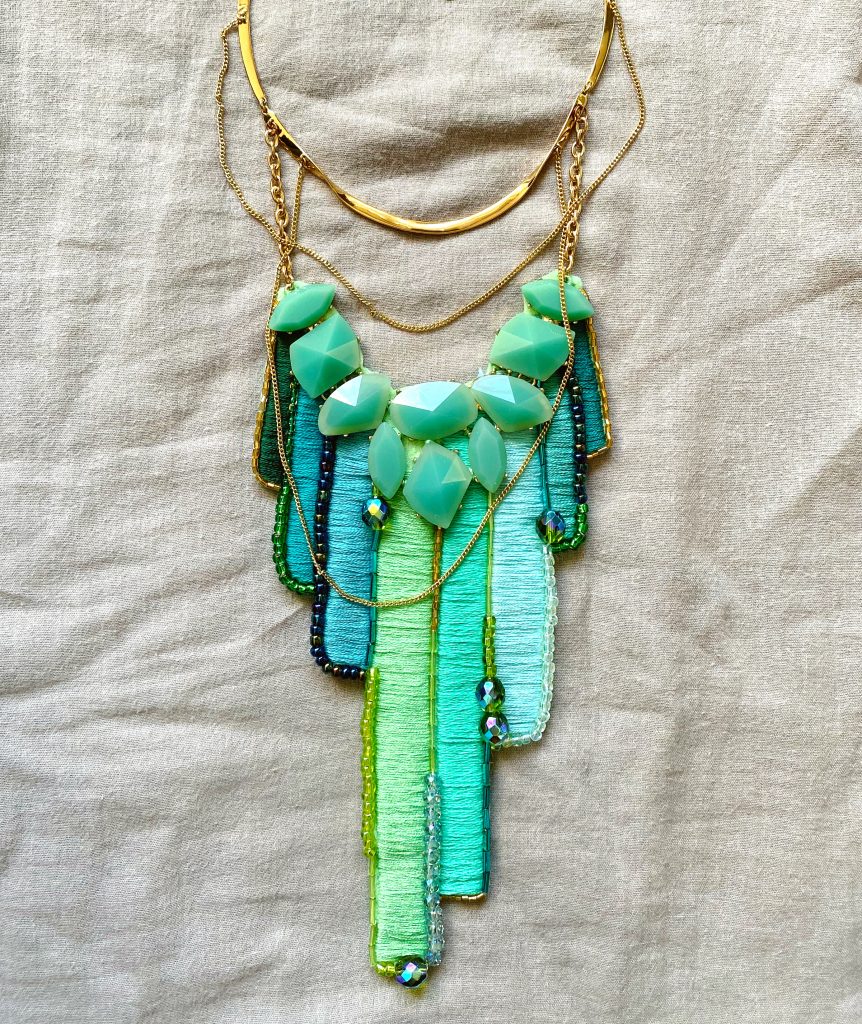
The Antheia (goddess of flowers) bib:
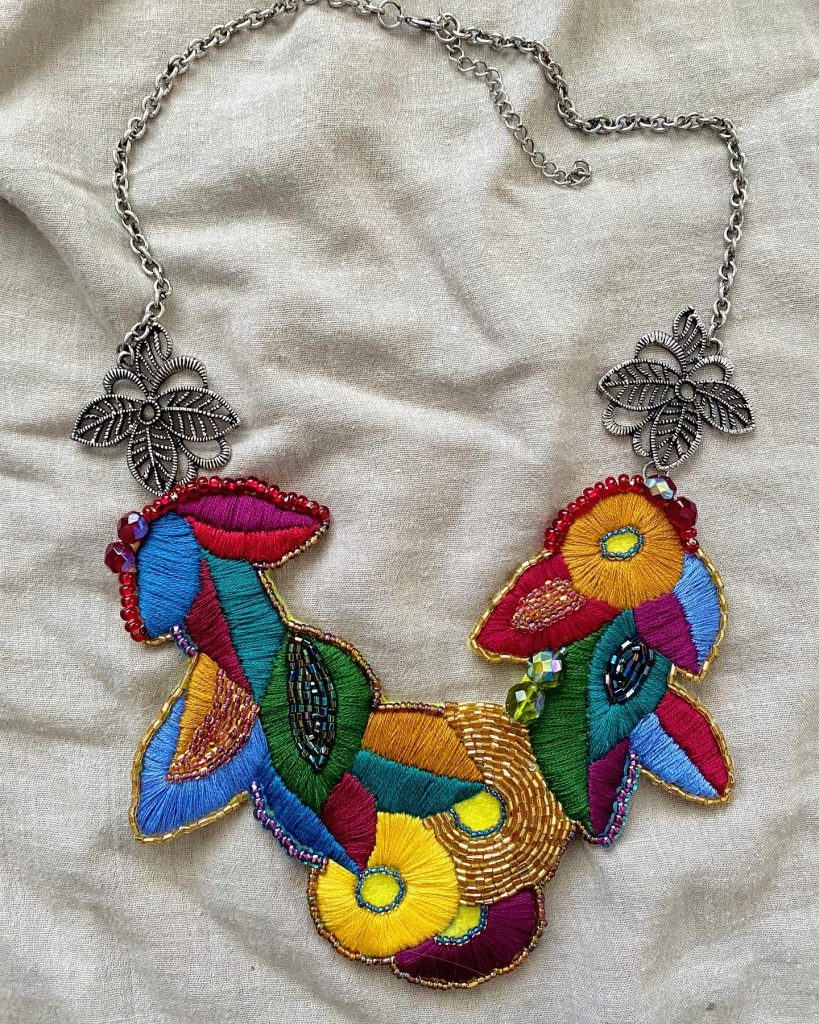
And the Andromeda earrings:
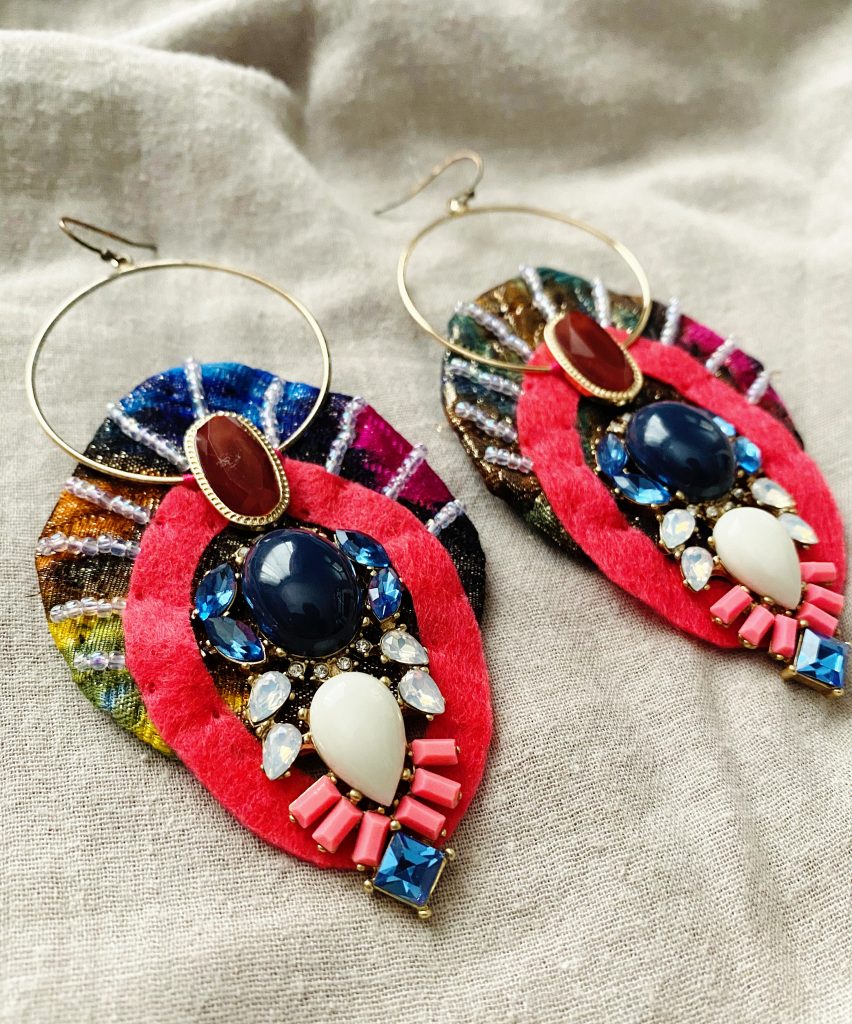
The Circe (sorceress) necklace:
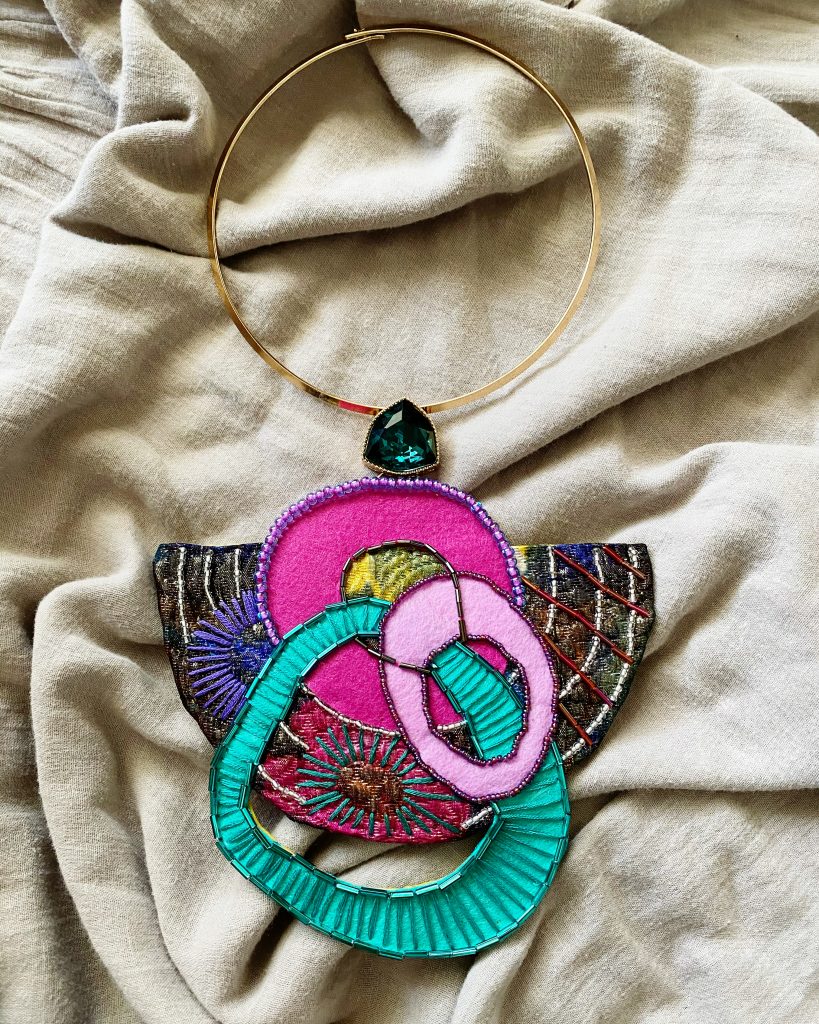
The Psyche earrings:
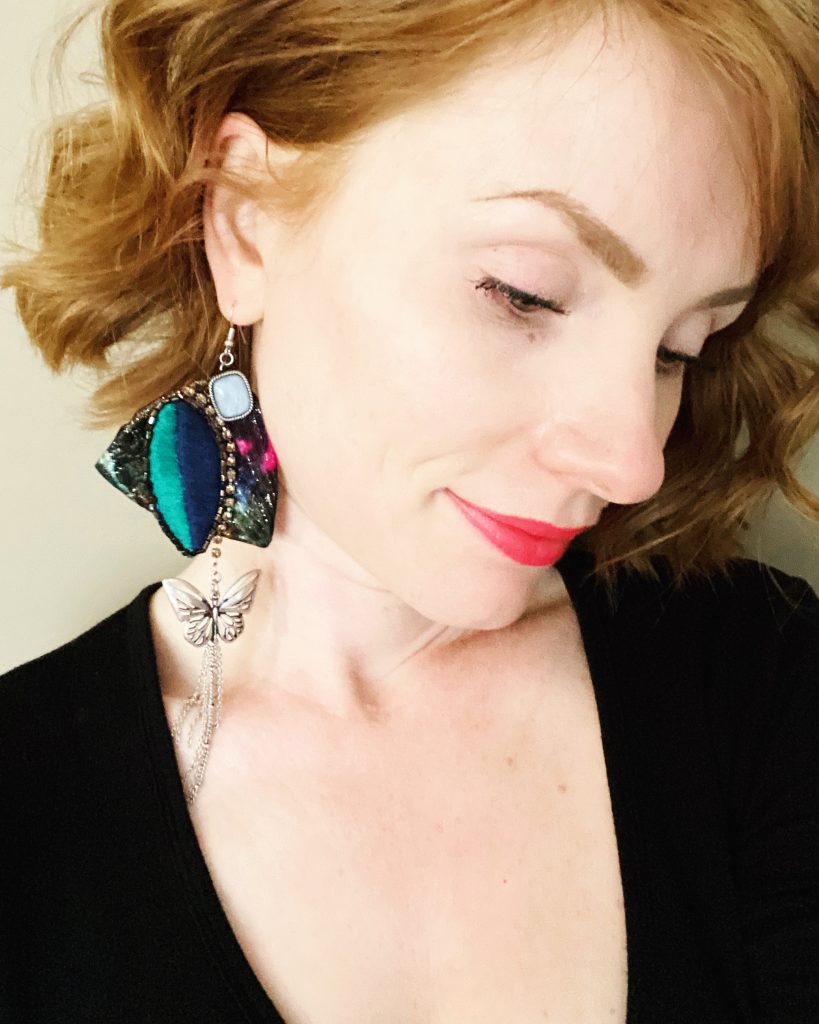
And, last but not least, the Hera necklace:
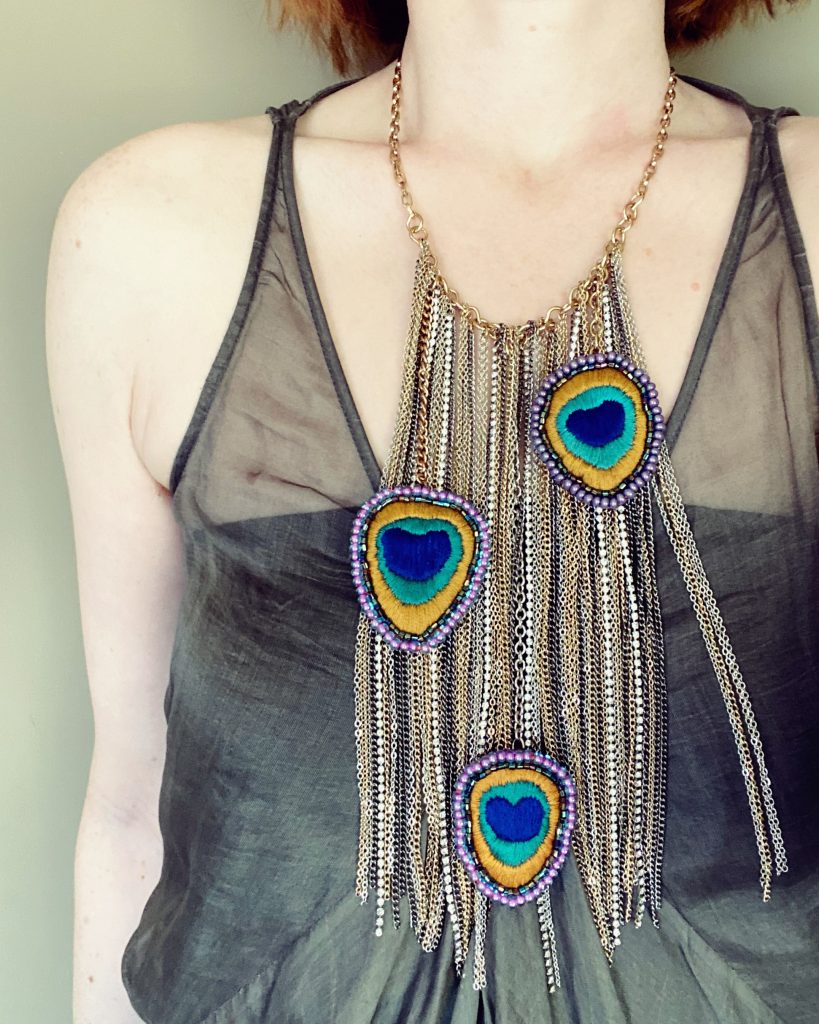
The last one was inspired by the story of Argus, the many-eyed giant who was set by Hera to watch over one of Zeus’ extramarital paramours. Argus was slain by Hermes (on orders from Zeus), and Hera commemorated him by preserving his eyes in the form of the peacock’s tail. This is one of those stories that abound in Greek mythology wherein everyone involved (except the hapless female human) turns out to be terrible. You may never look at a peacock feather the same way again, haha.
Meanwhile, I have also been feeling an itch to experiment with something different. I love embroidery and beading, but I have been drawn to and wanting to work with natural stones lately. Metalwork is out of the question at this time, due both to cost and logistical requirements, so I wasn’t getting anywhere until I heard about polymer clay. Clay can be baked in the oven (no fancy equipment required) and is sturdy enough to serve as a setting for stones. It’s also very lightweight, which is important for me when it comes to jewelry; I love large, chunky jewelry, but not super heavy pieces.
As is my usual wont, I ordered some materials and plunged right in. The only tutorial I watched was on baking instructions (so as not to burn my house down). I figured I would learn as I went – the same way I have with all of my crafts. And I have, although the learning curve is steep and I am nowhere near even the middle of it. My first piece had plenty of flaws, but it looked just good enough for me to want to keep working at this.
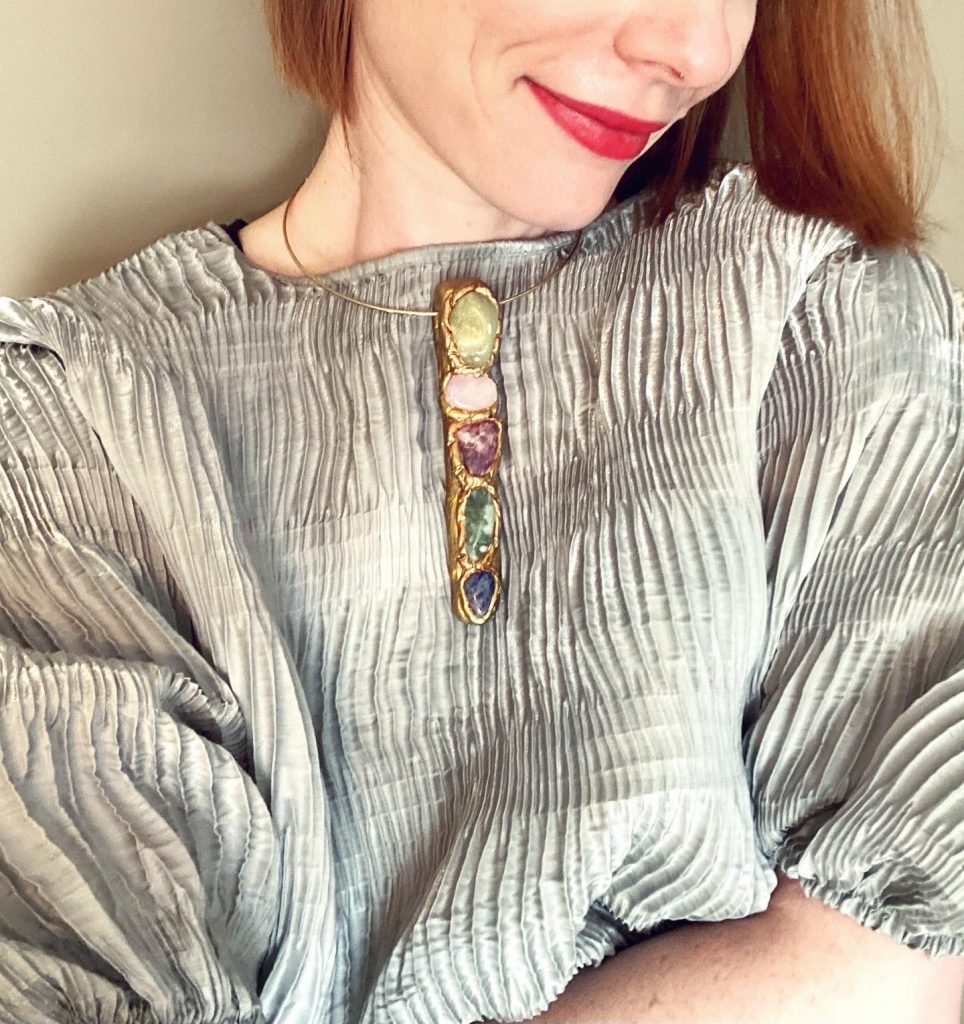
The main thing I learned was the importance of avoiding making things look too clumpy and, for lack of a better descriptor, turd-like. I practiced my clay-shaping skills on an unevenly-shaped purple jasper stone slice and made a ring:
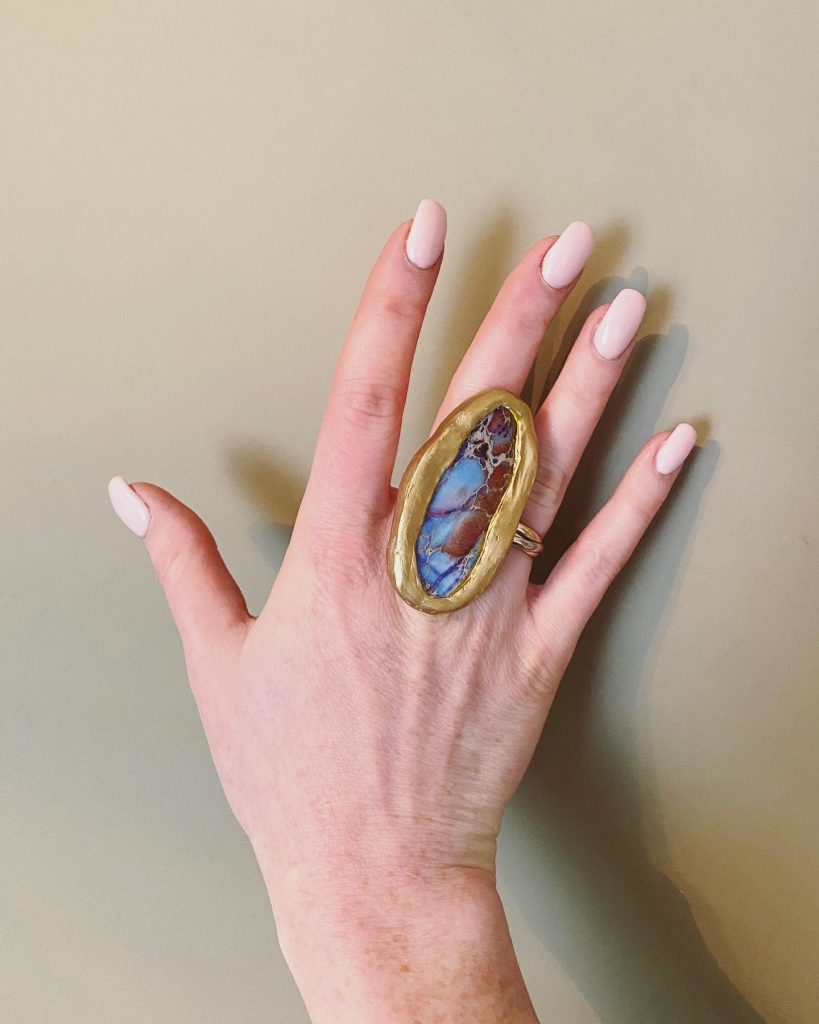
Then I tried a different (simpler) approach at using clay as a setting – this is the Dryad necklace:
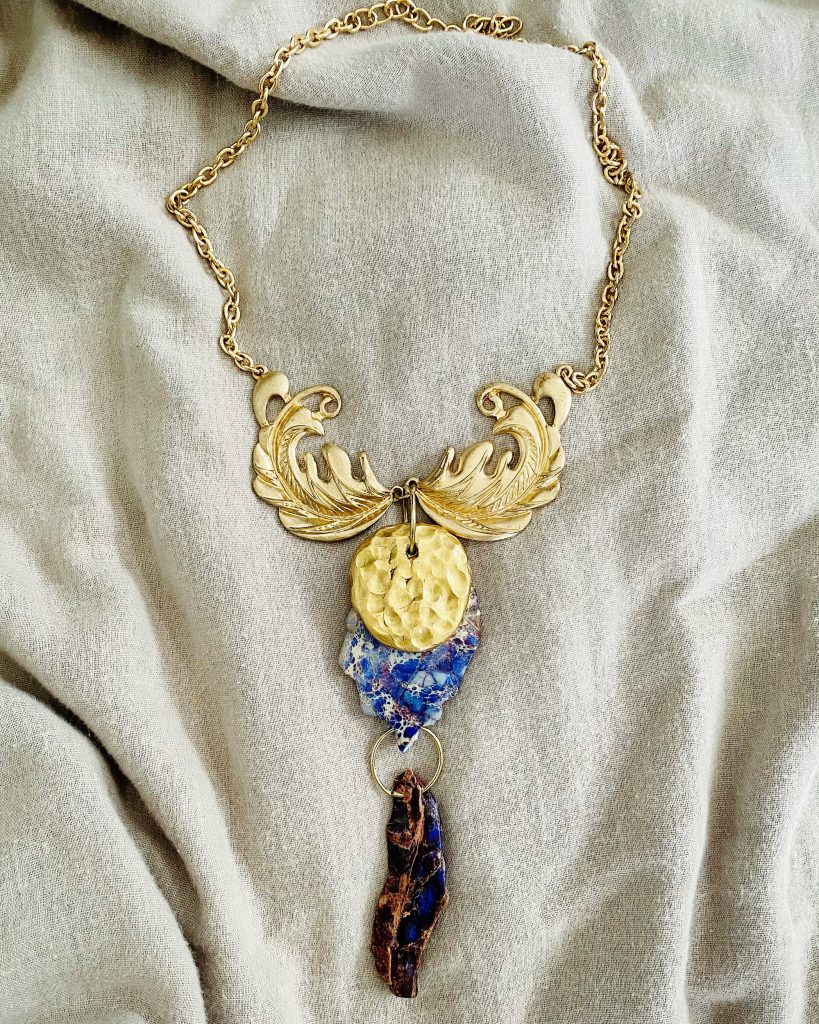
Most recently, I had another go at a pendant similar to the first one I made. I think it shows a lot of improvement, though I still have a long way to go. This is the Gaia necklace:
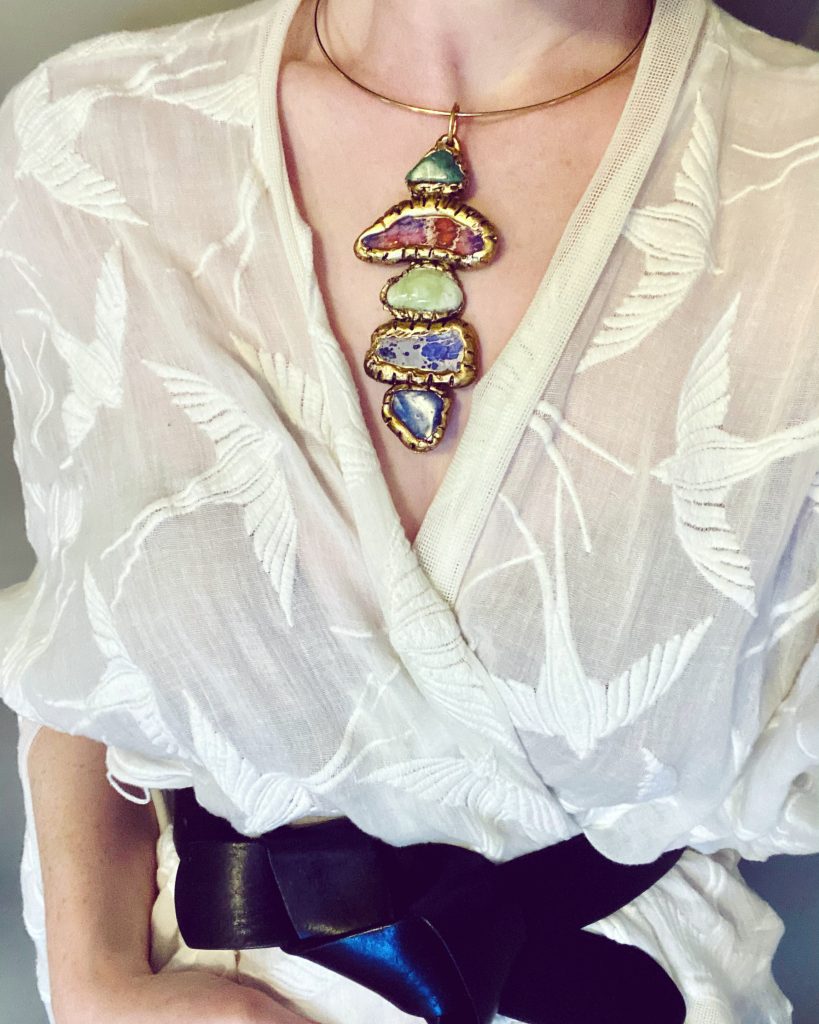
I have been using acrylic paints to finish my clay (I use white Premo Sculpey), but I want to experiment with different clays and different colouring media (maybe nail polish?) next. The biggest challenge has been sourcing stones. I prefer using larger ones, but they are difficult to source locally and what is available is very expensive. I am continuing to try to find pieces at thrift stores that I can upcycle, including stones, but I will need to look for other sources as well. Suggestions are welcome, by the way.
As always, thanks for reading along; I hope you are finding ways to express your creativity, in whatever form speaks to you.

Gorgeous pieces!
The Antheia necklace looks like something one could buy at Anthropologie, the details, colour, just everything about it. It’s really beautiful.
Thank you, Vicky.
You are so talented! I love these pieces!
Thank you, Ann.
That Hera necklace is beyond gorgeous (as, actually, is the whole line of mythology-inspired jewelry—as a huge Classics geek, I found myself totally inspired by everything!). Thanks so much for sharing your creativity, Adina.
Aww, thank you so much!
Wow, I actually love that first necklace (not turd-like at all hahaha)! I always love these posts. Putting that book on my to-read list. Have you read Braiding Sweetgrass? It touches on some of these concepts (meaning, value, consumerism, attention) but from a very different lens (indigenous, land based).
No but Odell mentions it in her book. It’s on my to read list.
Longtime reader, first time commenter. 😊
Huge admirer of all your creative endeavors, and am especially captivated by your jewelry pieces.
For polymer clay- you might try a combination of metallic powders (even natural mineral makeup would work) and liquid clay to finish your work. The liquid clay would require a second bake, but it is the same material as the underlying polymer clay and therefore has complete compatibility, material-wise.
Definitely avoid nail polish- the composition of polymer clay (PVC) reacts with the solvents in nail polish, which causes the clay to break down over time. Unfortunately, you’ll end up with an increasingly sticky mess.
Not as fancy as the real thing, but it can also be fun to play around with different characteristics of polymer clay to make fake semi-precious stones, if they’re proving hard to source for a reasonable price.
Can’t wait to see what you create next! Your posts have been a consistent bright spot in a challenging year. 😊
Ahh, thank you for the tip! I’m glad I haven’t tried the polishes yet, haha! I enjoy playing around with paint effects and they’re cheaper than buying different kinds of clay, but I may have to give those reccs a try.
Your pieces are incredible! And I also appreciate the book rec–I’ll have to pick that up.
Thank you, Emily!
Beautiful work! I especially like the Thetis necklace. And your thoughts on this book intrigue me. I think this is why I never pursued making a living solely in the arts—- because I wanted to be free to write and paint the things that interest me and not necessarily those that sell big. At the same time I often feel, as you seem to, that I need to keep selling in order to justify the time I spend writing and creating. Will have to read the book. Thanks for the recoemmndation.
It gave me a lot to think about. I still feel a constant pressure to monetize my art in order to justify it, but I am trying to give myself a break. The capitalist mindset is so ingrained, but it’s detrimental when it comes to creative expression.